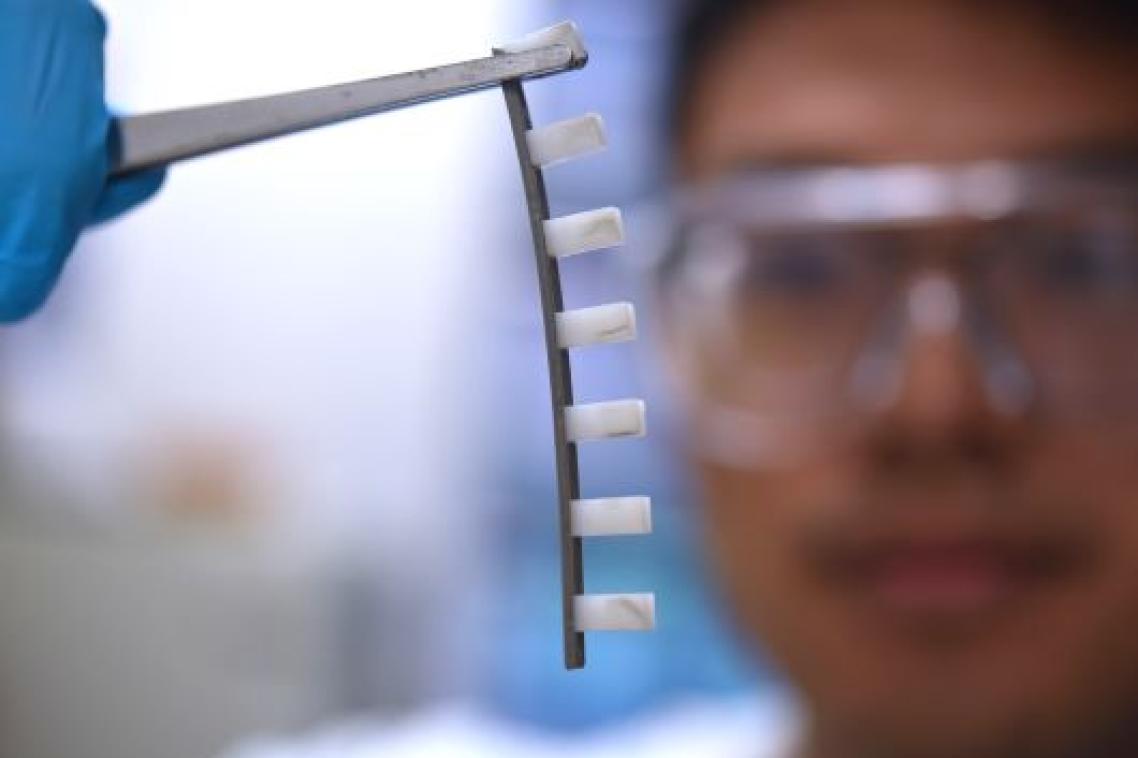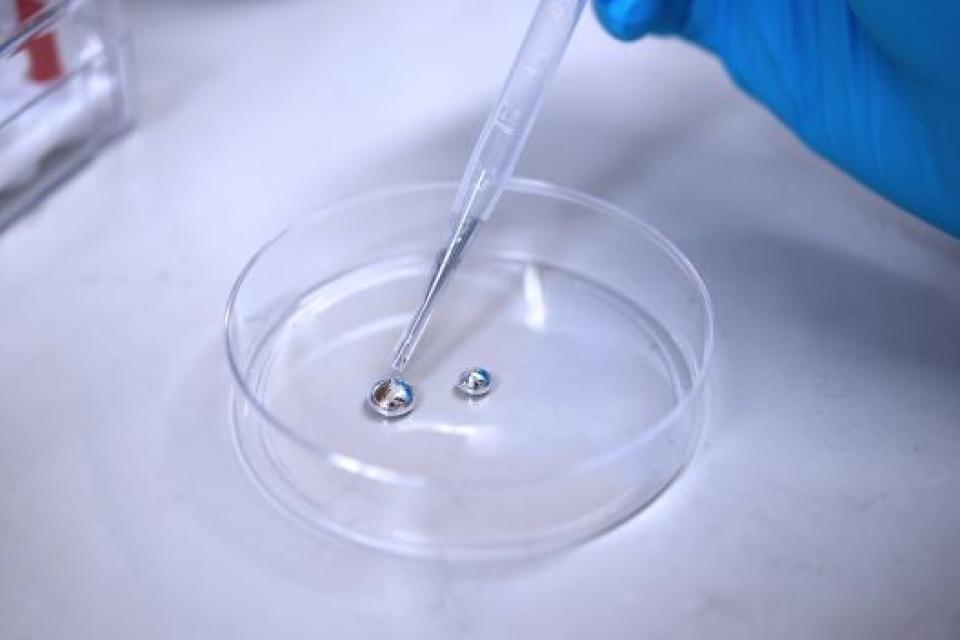Giving animal strength to medical robotics

University of Queensland researchers have developed a 3D printing method to produce shape-shifting liquid metal robotics with musculoskeletal qualities inspired by animal physiology.
Dr Ruirui Qiao and her research team at the Australian Institute for Bioengineering and Nanotechnology (AIBN) have used the technique to make medical rehabilitation components and devices with superior strength and flexibility.
“We set out to mimic the locomotion, flexibility and control of mammalian movement,” Dr Qiao said.
“By combining ‘soft’ spherical liquid metal nanoparticles and ‘rigid’ rod-like gallium-based nanorods in the 3D printing process, we have been able to replicate the interconnected network of bone and muscle that gives animals an advantage in efficiency and strength.
“This tuneable gallium-polymer composite can be used for next generation medical rehabilitation products like high-precision grippers for prosthetic limbs.”

Dr Qiao said many manufacturers draw inspiration from the locomotion mechanisms of soft-bodied creatures in nature.
“But making hybrid structures is very challenging due to limitations in material selection as well as the complex, multi-step processes involved in traditional manufacturing methods,” she said.
“We developed a new method to mimic animal physiology to benefit our own technology using a quick and simple manufacturing process.”
Dr Qiao said given the ease of fabrication and its potential applications, the soft-rigid polymer composite could revolutionise the field of hybrid soft materials and accelerate innovations in soft robotics.
“We would like to see research that advances 3D printing technologies and design strategies, focusing on increasing the proportion of metal-based nanoparticles within the 3D-printed composite,” she said.
“This will further enhance responsive properties and ultimately improve the performance of hybrid soft robots.”
The project involved AIBN researchers including Xumin Huang, Jiangyu Hang, Naufal Kabir Ahamed Nasar, Thomas Quinn, Dr Liwen Zhang, and Professor Tom Davis.
The research is published Advanced Materials.
Image above left: Liquid metals used for preparing tuneable gallium-polymer composite.
Media assets
Images available via Dropbox
Media contact
AIBN Communications
communications@aibn.uq.edu.au
+61 447 305 979
Related articles

Australia needs doctors – so why are hundreds of qualified international physicians unable to work?

Greater attention needed on community service workforce
Media contact
UQ Communications
communications@uq.edu.au
+61 429 056 139
